
The verdict is in — nature makes us feel good. Not that we didn't already intrinsically know that. One way to ensure a stress-busting daily dose of nature is to opt for a maximalist garden in your own outdoor space.
The main elements of maximalism are bold colors, clashing patterns, rich textures-and plenty to uplift the senses. All of which can be achieved within your modern garden ideas with some careful planning and strategic planting.
And just like maximalism in interior design, you don't have to be a fully fledged 'maximalist' to enjoy this aesthetic outside in your garden. Here's how.
1. Select a Strong Yet Limited Color Palette
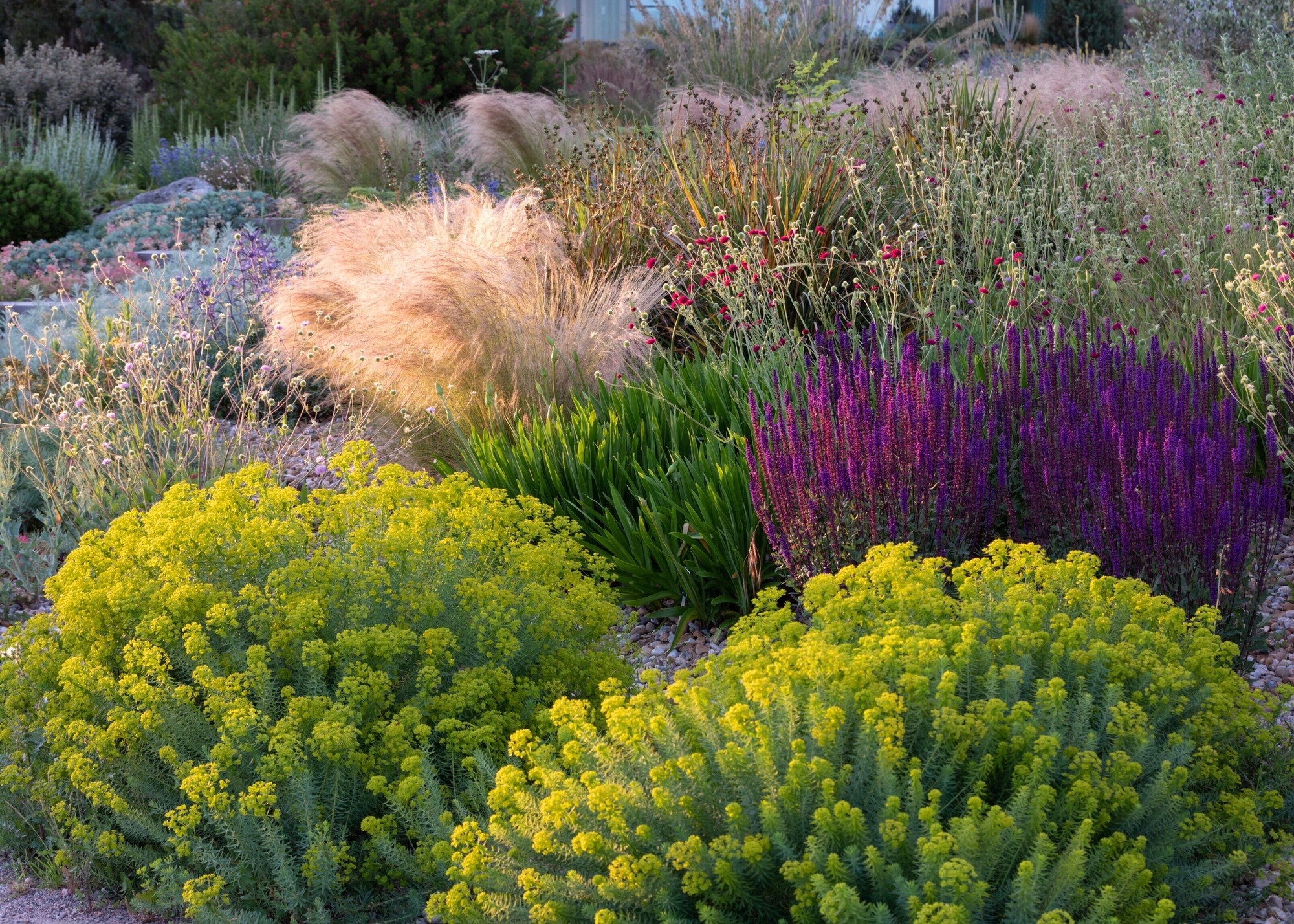
Maximalism as an interior design trend is about creating joyful, expressive spaces filled with color and pattern, which can easily be applied in the garden too. Yet that doesn't necessarily mean that 'anything goes'. Maximalist spaces, whether indoors or out, are curated with as much care as those with a more pared-back approach.
"Whilst maximalist gardening sounds like a ‘more is more’ approach, actually doing a few bold things well has more impact, and looks more designed," explains Alexandra Hollingsworth, garden designer and co-founder, Dig.
"Selecting a strong, yet limited, color palette looks more effective than throwing as much color at the garden as possible. This could be clashing or contrasting tones such as burgundy, orange, violet, and chartreuse, for example."
2. Consider a Theme
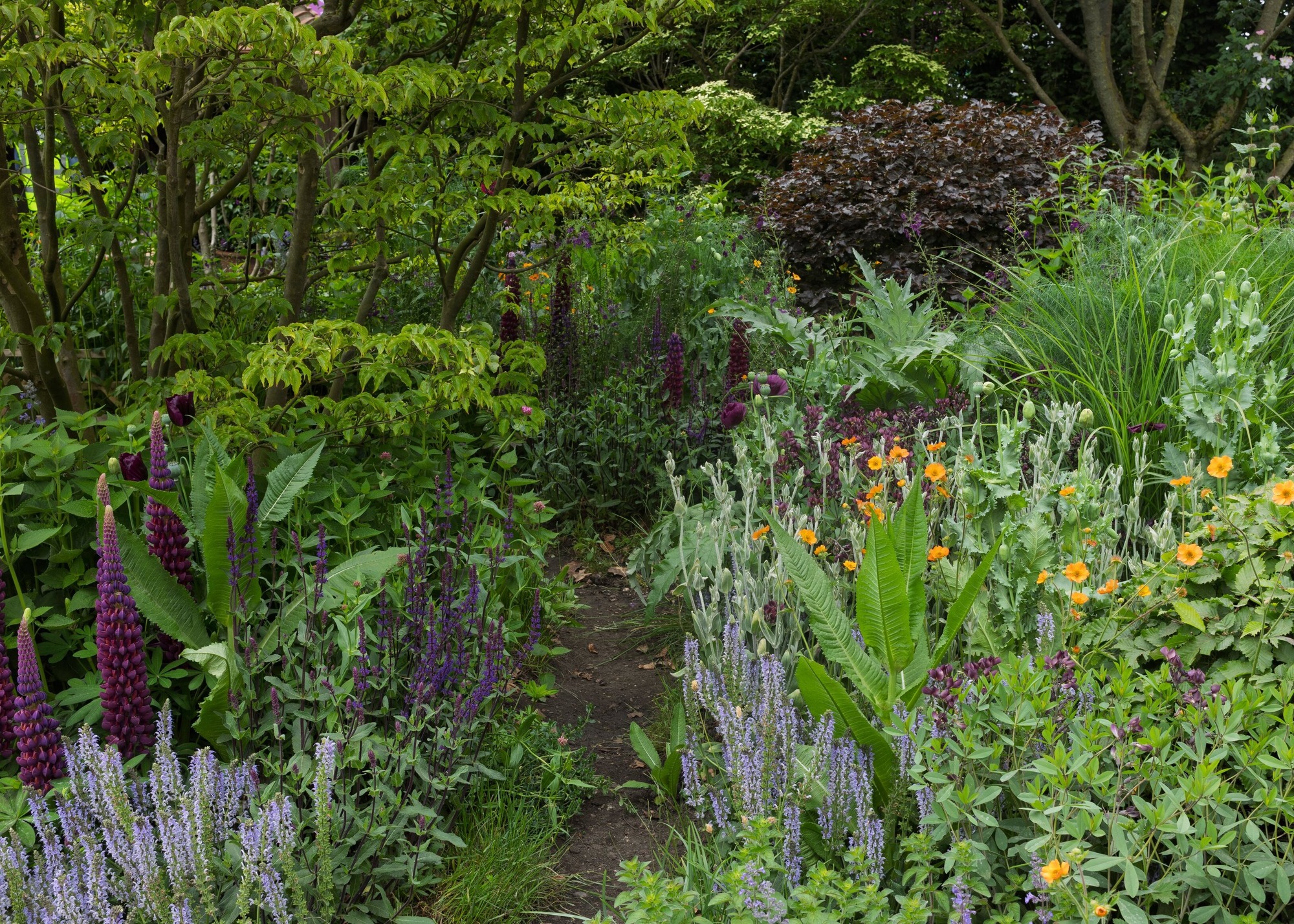
The choice in plants is vast, and it's easy to get overwhelmed. Identifying a loose theme for your maximalist garden ideas will give you a framework in which to make a plant selection. It doesn't have to be strictly adhered to, but it will help you to hone your choices. Consider whether you — and your outside space — lean towards a Mediterranean garden vibe, English country cottage, tropical garden, or something more in tune with your taste or lifestyle.
"The maximalist garden is a vibrant, personality-driven space that celebrates abundance and contrast," says garden designer Paul Studholme, founder of The Plant Hunter. "The opposite of minimalism, it is about big color, big texture, and 'organised chaos'. It should ooze creativity and artistry with a heavy lean towards nature and ecology.
"Consider a theme, such as 'cottage chaos', inspired by the traditional English cottage gardens on steroids, with bright pinks, deep purples, sunny oranges, and splashes of red and yellow.
"A great selection for this would be Peonies with Verbena and Rudbeckia adjacent to violet salvias, and foxgloves popping out of a mass of knautia and Cosmos. This gives a natural wild look with some structure still evident, but not over-curated.
"Alternatively, go for a 'gothic castle' style, with a color palette of moody reds, dark greens, deep blues, whites, and silver. This is maximalism with drama. It could be as simple as a two-tone look with black and white, but when the odd splash of color is introduced, it really stands out and finishes the look. Work with a silver carpet of plants and layer up with differing shades, adding the color as the last touch."
3. Swap Large Swathes of Lawn for Ground Cover Plants

Grass alternatives work well with maximalism (and no, this doesn't mean swapping a lawn for something even worse, like plastic astroturf). Those ditching the lawn are doing so for a more diverse and layered landscape, as turf grass is a monocrop. So consider wildflowers, sedges, or groundcovers to encourage greater biodiversity.
"The use of layering in any garden is key, but in the maximalist garden it's even more important," says Paul Studholme. "We are trading lawn and patio for plants, so there’s literally more ground to cover.
"If you don't want to be a slave to weeding, you need a good carpet of 'easy to grow' plants that will keep them away. Vinca, Pachysandra, and Ajuga are great groundcover plants to prevent weeds.
"From this base, build up with the next level. So, plants that get to around 40-80cm, then from there add some trees and taller plants. The size of these will depend on the space you have to play with, and be careful not to block light to windows or plant trees right next to the house.
"After you have these key layers in place, add the pops of color and texture to accent the base you have created. Play with colors and shapes; think of it like painting a picture and the plants are your paints."
4. Mix Bold Blooms With Tall Stems and Smaller Flowers
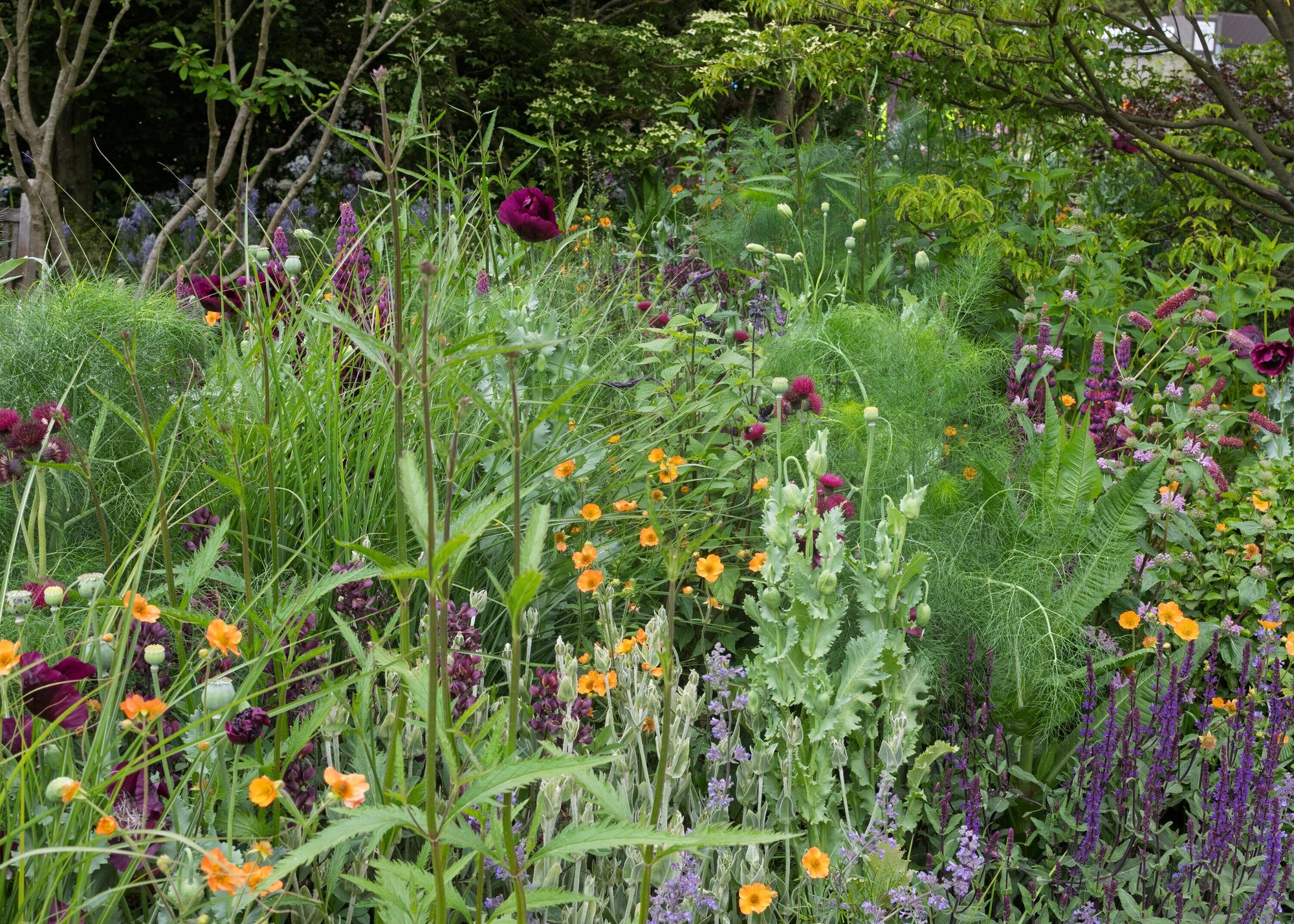
Big, blousy blooms clearly deserve a place in your outside space, if a maximalist garden is your goal, but as already stated, think about which colors you're teaming together, as well as which shapes. Mix large blooms, tall stems, smaller flowers, and foliage, so the larger plants can stand out.
"Plants particularly suited to this garden style have large blooms, and/or large leaves," says Alexandra. "Dahlias, Camellias, Rudbeckias, Digitalis, and Salvias all work well and have a wide range of colors. These ‘showstopper’ plants can be balanced with softer ‘filler’ plants, like grasses and ferns.
"Be sure to think in three dimensions and prioritise some large specimens in your planting budget, such as tall topiary or mature camellia bushes."
5. Include a Few Statement Elements
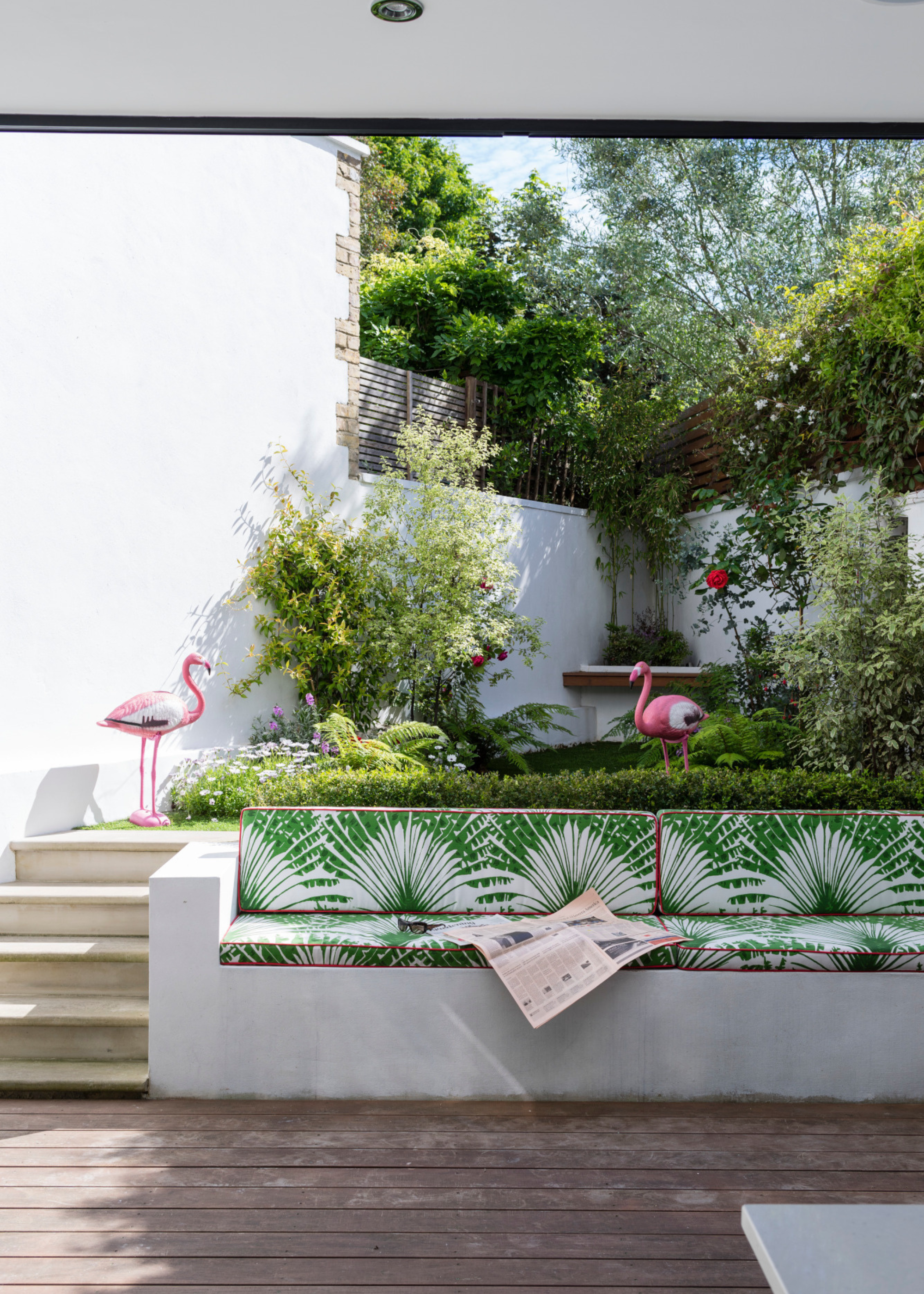
Once you've chosen a color palette for your garden, it can be applied to other elements beyond just your flower bed ideas. As well as natural materials and plants, consider colorful planters, garden furniture, or fabrics that blend in with the planting scheme.
"Similarly with the design and layout, an over-filled garden will start to look chaotic and muddled," says Alexandra. "Choose a few statement elements and be bold with them, such as large glazed containers, repeated around the garden.
"Additionally, colorful furniture in the same color palette as the planting will enhance the maximalist vibe."
6. Layer Your Planting
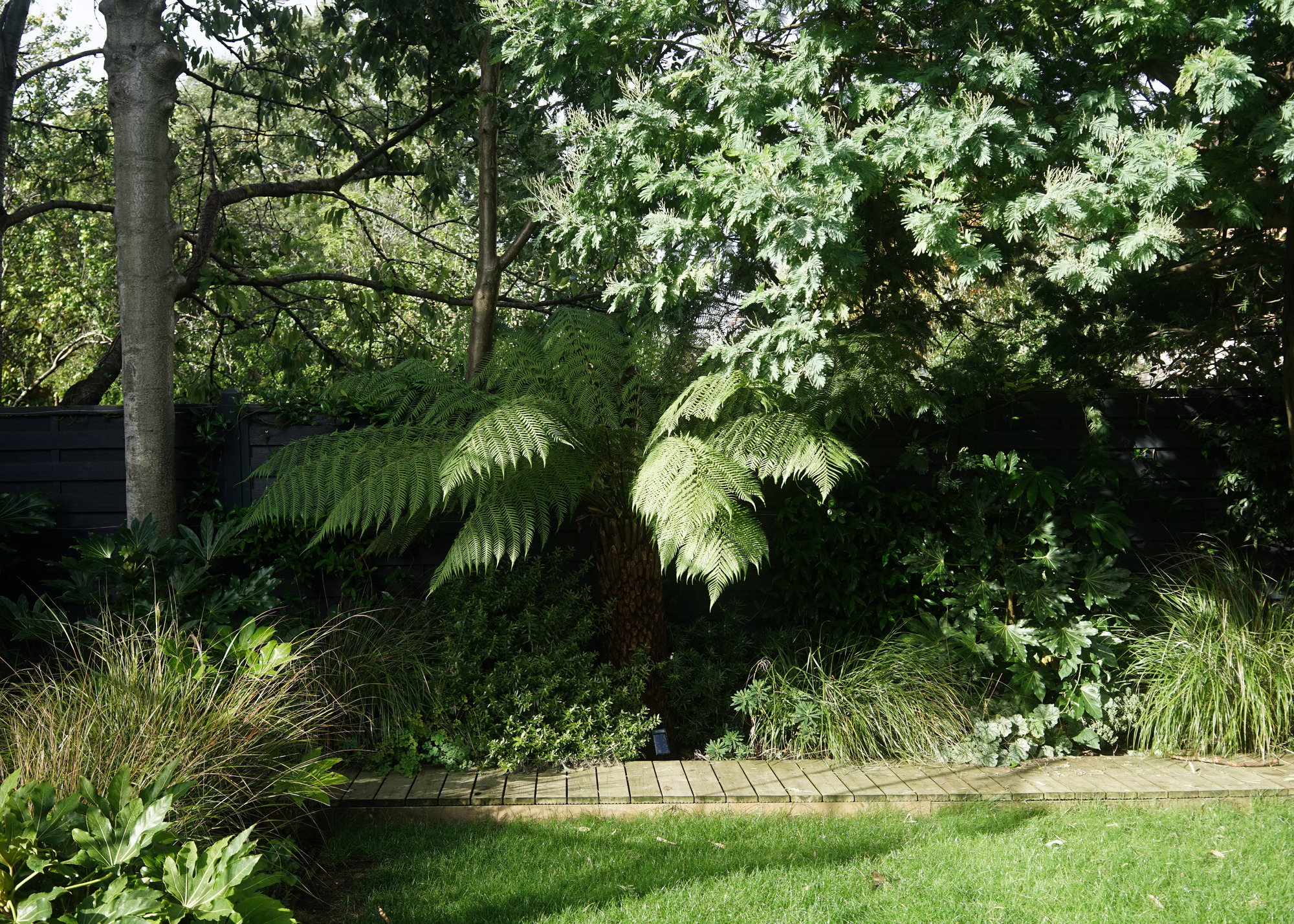
For a garden to feel 'full', it needs different layers of planting, much like you would see in a forest, woodland, or jungle. This means out with skimpy flower beds and large lawns and in with generously filled areas full of shrubs, plants, and trees at varying heights, with canopy and understory layers.
"Color isn’t the only route to maximalism — foliage can be just as expressive. In fact, establishing a strong base of foliage is often the foundation of a truly immersive planting scheme," says Harry Holding, garden designer and founder of Harry Holding Studio.
"Taking inspiration from natural plant communities, we layer plants that each occupy a niche — groundcovers, mounds, uprights, sprawlers — and create contrast through form, texture, and scale."
7. Ensure Plenty of Texture and Different Leaf Shapes
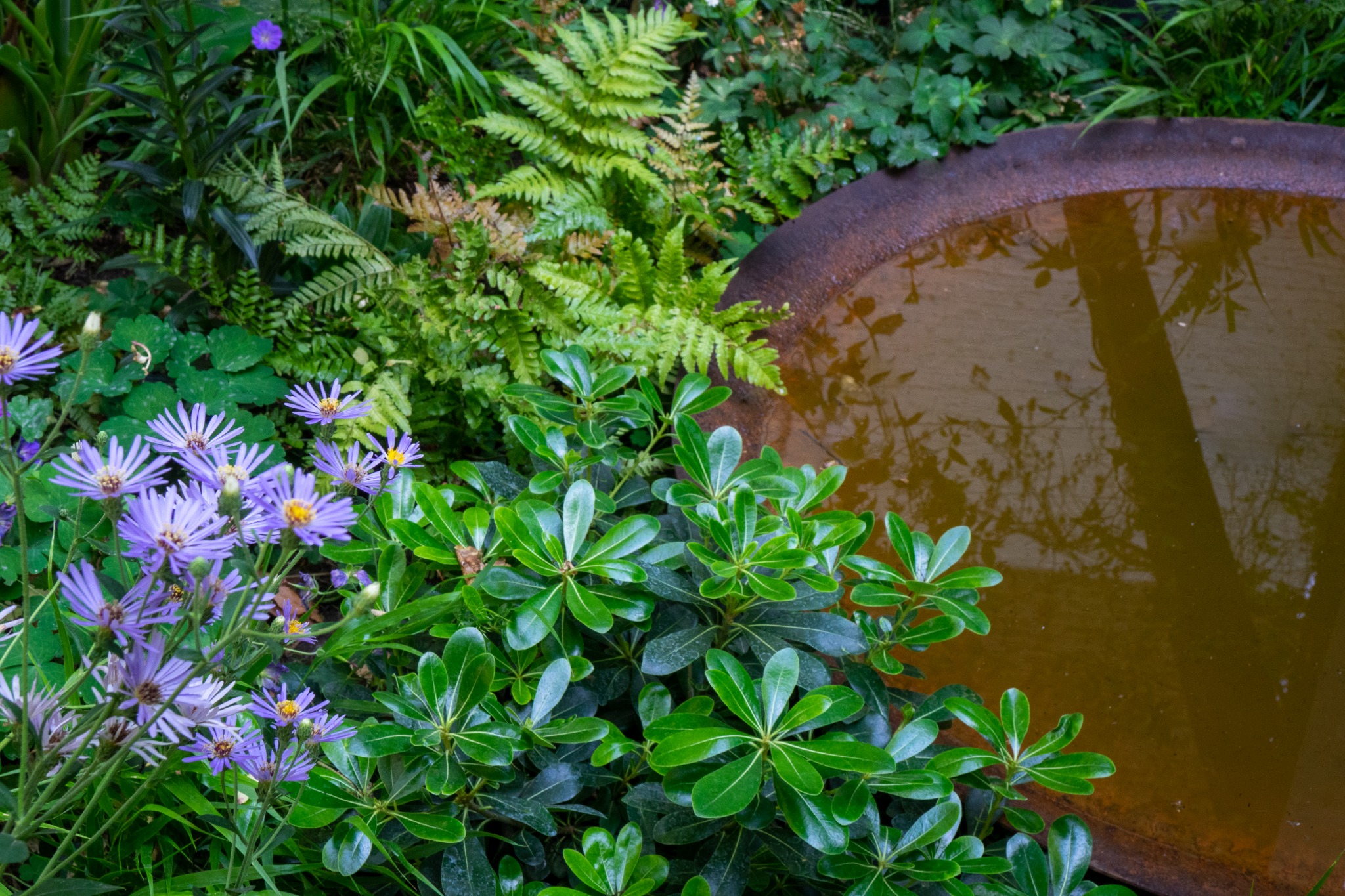
When layering your plants, consider the different textures, shapes, and sizes of the leaves and foliage, as well as their different heights, particularly if you want a maximalist feel without going overboard with colorful flowers. It's entirely possible to achieve this look just with foliage.
"Think of the drama in pairing large, coarse leaves with fine, feathery ones; the architectural lines of strappy grasses next to broad, matte foliage," says Harry. "Even in a largely green palette, this interplay adds richness and depth. It’s particularly effective in shadier spaces, where floral displays may be limited but foliage thrives. With the right combinations, you can evoke a wild, enveloping, maximalist feel — without needing a riot of blooms."
"Large-leaved plants like banana, Canna lilies, and tree ferns are a fantastic choice," adds Paul. "Include contrasting textures — smooth leaves next to frilly ferns, for example. Then add pops of color at different heights."
8. Make the Most of Varied Levels

A garden with different levels and plantings at different heights looks far more interesting than one that is flat. So don't despair if yours has steps or a slope. These can be integrated into your garden design, and there are many different ways to add height to your garden, such as creating different levels with a step-up deck, raised beds, and tall planters.
"Maximalism is as much about sensory richness and layered experience as it is about visual fullness," says Harry. "Varying floor levels create instant intrigue and a sense of journey — your eyes explore the space before your feet do.
"Sometimes level changes are already present, and we treat them as an opportunity, rather than a constraint. But if a site is flat, you can still design in a subtle play of levels: raised beds that cradle seating areas, sunken lounges surrounded by planting, or gentle terraces that shift the perspective and microclimate.
"These shifts can help with sun exposure, wind protection, water flow — and they elevate the drama and rhythm of the garden. It becomes a space you move through, not just across."
9. Go Easy on the Hardscaping
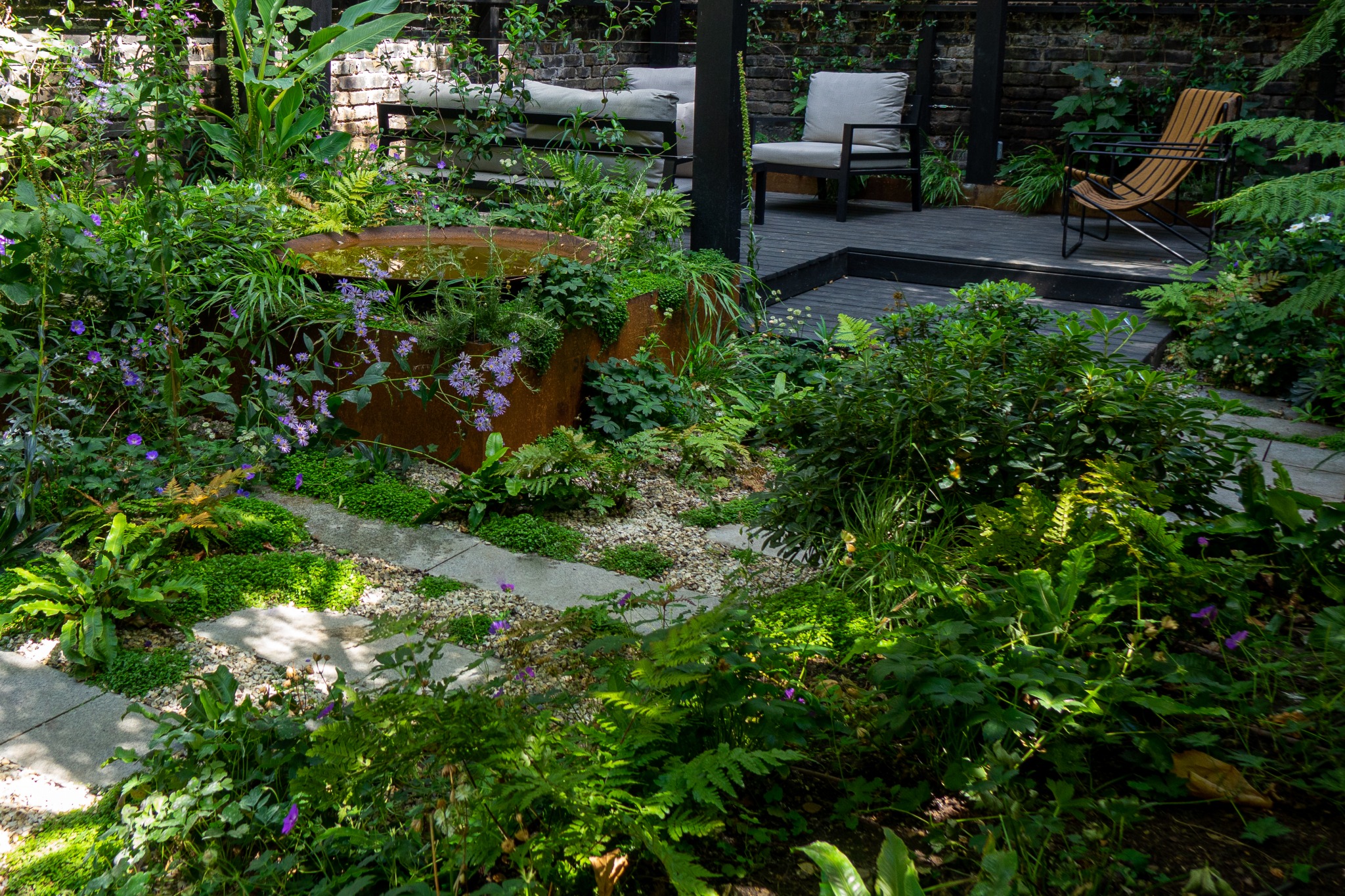
All too common are outside spaces covered with vast swathes of paving and barely any planting, which often look soulless and sparse. For your garden to avoid this fate, go easy on the hardscaping materials and choose what you do use wisely and integrate it subtly.
"When we design with maximalism in mind, we often start by imagining a garden as completely planted — rich, immersive, and full of life," says Harry. "From that vision of abundance, we then carve out the functional elements: a terrace tucked between borders, stepping stones weaving through greenery as a lovely garden path idea, or a seating area emerging from a wild tapestry of planting.
"This approach ensures that the hardscape doesn’t dominate — it’s integrated, supportive, and allows planting, biodiversity, and beauty to hold center stage. Material choice plays a huge part. We look for cohesion: something that connects with the architecture of the house, the personality of the client, and the surrounding landscape.
"Textural stone, reclaimed brick, or even gravel can be softened through irregular or organic layouts, permeable joints, and planting that’s allowed to creep in and evolve over time. In our Earls Court Oasis garden, we used granite stepping stones nestled into a richly planted scheme — so the hardscape feels like it belongs within the planting, not apart from it."
10. Choose Evergreens and Plants With Different Flowering Times
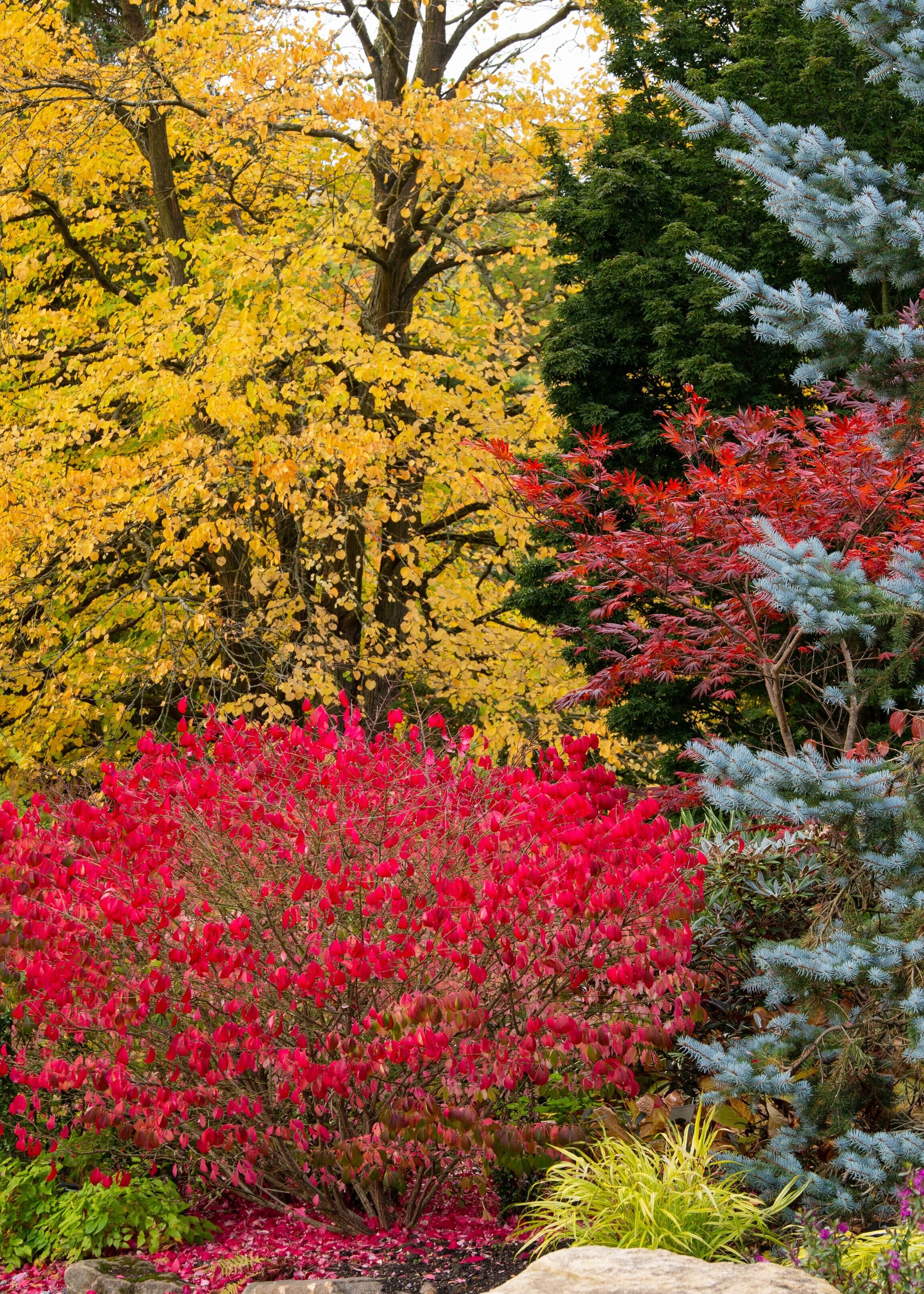
A maximalist garden doesn't just bloom in the spring and summer months. It requires plants that will provide color, texture, and interest in the fall and even during the depths of winter. Evergreens and winter-blooming plants will keep your garden looking vibrant when everything else is dormant.
"Choose plants with different flowering times and stem interest for all-year interest," says Paul. "Also, incorporate self-seeding plants and allow them to spread in swathes, so even more come back next year."
Plant for the longer term, too, and choose the best trees with fall color for a seasonal show when the flowers start to fade.
FAQs
Are Maximalist Gardens the New Trend for 2025?
With the recent release of Teresa Woodard's Garden to the Max, maximalism is at the top of the gardening agenda in 2025.
"2025 sees maximalist gardens becoming more popular with less interest in a huge, perfect lawn and more emphasis on the plants," says garden designer Paul Studholme, founder of The Plant Hunter.
"For me, the garden is all about the plants, they create the different dimensions and interest through the year, and you don't ned to cut them every week like a lawn. They also provide a much better environment for nature, if done correctly, and require a lot less water. It's the use of plants that gives the garden space drama, character, and style."
Whatever your own personal style or location, a maximalist garden can be created to suit your outdoor space and create an uplifting retreat, even in an urban garden. From lush green foliage and limited color palettes to rich and riotous hues, filling your garden with plants, shrubs, and trees will provide a place for rest and respite.







